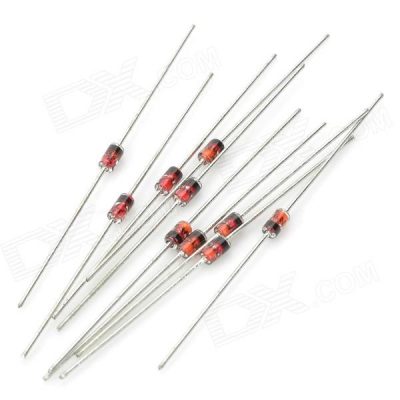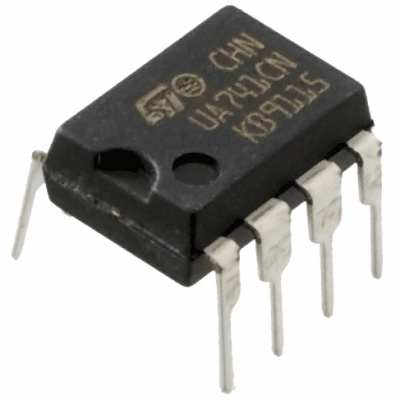CD4096 (16-stage binary ripple counter )
Description
The CD4096 is a 16-stage binary ripple counter IC from the CD4000 series. It is designed to count in binary and can be used for applications where a simple counter or time delay is needed. The CD4096 is widely used in digital electronics for tasks such as counting events, dividing clock frequencies, or generating time delays.
CD4096 IC Description:
The CD4096 is a 16-bit binary ripple counter capable of counting from 0 to 65535 (16-bit range) in binary. It counts in a ripple fashion, meaning that each stage in the counter will toggle in response to the clock input, and the output of each stage is connected to the clock input of the subsequent stage. This type of counter is generally slower than synchronous counters, but it is simpler to design and use.
Key Features:
- 16-Stage Binary Ripple Counter: It counts up to 65535 in binary, offering 16-bit resolution.
- Ripple Counting: The IC is a ripple counter, meaning each flip-flop in the counter changes its state in sequence, which can introduce some propagation delay.
- Clock Input: The counter increments on the rising edge of the clock signal.
- Asynchronous Reset: The counter can be asynchronously reset using the reset pin, allowing you to clear the counter to 0.
- TTL-Compatible: The IC is TTL (Transistor-Transistor Logic) compatible, meaning it works well with standard TTL logic devices.
- Wide Voltage Range: Typically operates at a voltage range of 3V to 15V.
Pin Configuration (16-pin package):
Here’s the pinout for the CD4096 16-stage binary ripple counter:
- Pin 1 (Q1): Output of the first flip-flop.
- Pin 2 (Q2): Output of the second flip-flop.
- Pin 3 (Q3): Output of the third flip-flop.
- Pin 4 (Q4): Output of the fourth flip-flop.
- Pin 5 (Q5): Output of the fifth flip-flop.
- Pin 6 (Q6): Output of the sixth flip-flop.
- Pin 7 (Q7): Output of the seventh flip-flop.
- Pin 8 (Q8): Output of the eighth flip-flop.
- Pin 9 (Ground): Ground connection (GND).
- Pin 10 (Q9): Output of the ninth flip-flop.
- Pin 11 (Q10): Output of the tenth flip-flop.
- Pin 12 (Q11): Output of the eleventh flip-flop.
- Pin 13 (Q12): Output of the twelfth flip-flop.
- Pin 14 (Q13): Output of the thirteenth flip-flop.
- Pin 15 (Clock): The clock input for the counter.
- Pin 16 (Reset): Active-low reset input for the counter.
How It Works:
- Counting Process:
- The CD4096 operates as a binary counter. On each rising edge of the clock signal (pin 15), the binary value in the register is incremented by 1.
- The IC consists of 16 individual flip-flops, each representing a bit of the binary value. The Q1-Q16 outputs represent each of the 16 bits of the counter, from the least significant bit (LSB) to the most significant bit (MSB).
- Ripple Counting:
- The counter works in a ripple fashion, where the output of each flip-flop serves as the clock input for the next flip-flop. This means that the first flip-flop toggles immediately upon receiving a clock pulse, and subsequent flip-flops toggle in sequence. As a result, the counter output will change in a “ripple” manner.
- This type of counting can lead to some propagation delay, as each flip-flop must wait for the previous one to change before it can change state itself.
- Reset Function:
- The Reset pin (pin 16) is an active-low input that can be used to reset the entire counter to 0. When the reset pin is pulled low, the counter will be reset, and all outputs (Q1-Q16) will be cleared to 0.
Truth Table:
| Clock (CLK) | Reset (RES) | Outputs (Q1 to Q16) |
|---|---|---|
| Rising Edge | High | Increment the binary value |
| Rising Edge | Low | Reset all outputs to 0 |
Applications:
- Event Counting: The CD4096 is useful in applications where events need to be counted, such as in pulse counters or frequency dividers.
- Frequency Division: By using the CD4096 in conjunction with a clock signal, you can create frequency dividers that reduce the frequency of the input clock signal.
- Time Delay Generation: The IC can be used in time delay circuits where a specific number of clock pulses are counted before triggering an action.
- Digital Clocks and Timers: Since the IC can count to a maximum of 65535, it can be used in applications like digital clocks or timers where a large counting range is needed.
- Binary Data Storage: The CD4096 can be used to store binary data over time by utilizing its output pins for various logic circuits.
Electrical Characteristics:
- Supply Voltage (Vcc): Typically 5V, but can range from 3V to 15V.
- Current Consumption: As a CMOS device, the CD4096 consumes very low current.
- Clock Frequency: The IC can operate at high clock frequencies (depending on the supply voltage and load conditions) but will be slower than synchronous counters due to the ripple counting mechanism.
Example Circuit:
In a frequency division application, the CD4096 can be used to divide the frequency of an input clock signal by a factor of 65536 (since it is a 16-bit counter). The clock signal would be fed into the clock pin (pin 15), and after 65536 clock pulses, the counter will reset and begin counting again. This can be useful for creating low-frequency signals from a higher frequency source.
Only logged in customers who have purchased this product may leave a review.
- Image
- SKU
- Rating
- Price
- Stock
- Availability
- Add to cart
- Description
- Content
- Weight
- Dimensions
- Additional information





Reviews
There are no reviews yet.